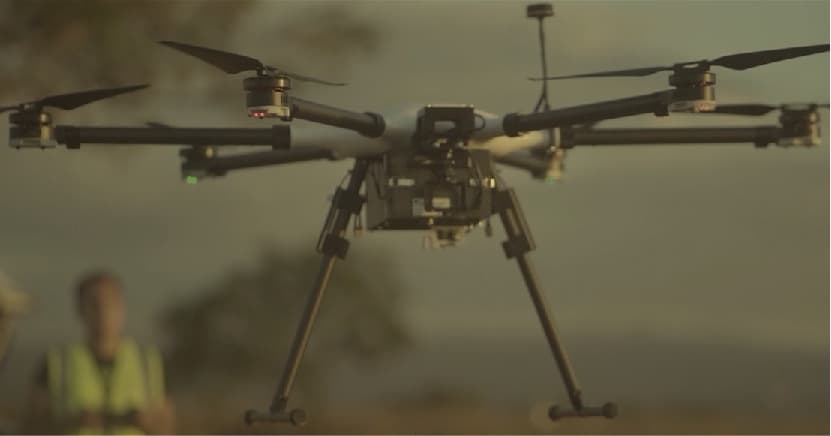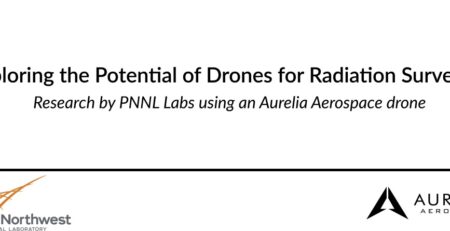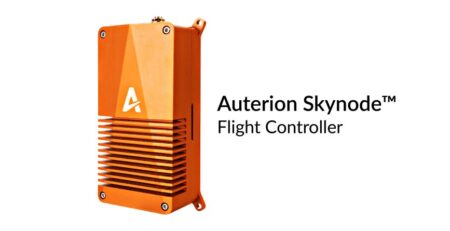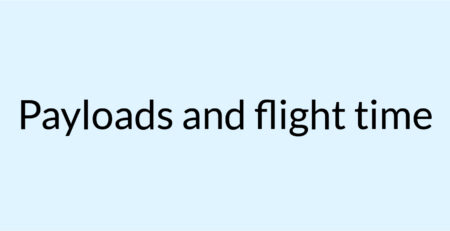How to operate your drone in challenging environments
Now and then as a drone pilot, you will encounter different climates that from time to time might change in the area where you will be flying your drone. In this article, we will give you tips about flying drones in different weather and operating conditions.
Many drones that we build today are that advanced and automated to the point where you as a drone pilot don’t have to do much after take off. However, flying in difficult operating conditions could sometimes lead to possible damage to your drone. This article will explain in detail how to make the right decisions before and while flying your drone.
Flying your drone in extreme heat or cold climates
In general, whatever the operation is of a drone, a drone is an electronic vehicle that uses batteries that generate a lot of heat while in operation. When it comes to warmer or colder climates, it can have a huge effect on the performance of the battery, the heat tolerance, and with that the operational limits of the drone.
How to handle your drone in cold temperatures
The flight time duration depends a lot on the climate. On average, while a battery in room temperature, around 19-22°C, a drone battery drops in performance between 1 and 3% per 30 seconds while in operation. In cold weather batteries, in general, have a much harder time performing to their full extent. When operating a drone in cold weather the duration in which you can use the battery per flight might drop somewhere between 7-10% per 30 seconds.
Due to the quicker drop of battery performance, it is recommended to have multiple batteries with you that you can switch out when the battery there’s almost no charge left, to still get the flight time you are looking for. Another great addition is to buy a battery case that can maintain a more similar warmth than you would have while in room temperatures. Due to recent developments in batteries, Aurelia Aerospace now offers Long Endurance batteries, that will extend your flight time in normal conditions with a 40-45%.
One way to counteract cold weather is by bringing multiple batteries with you during a flight, and keeping the extras warm in a glove compartment so they don’t lose capacity in the cold. Additionally, making sure to change out batteries when they drop below 70% is important to prevent a massive battery life drop and drone damage.
How to handle your drone in extreme heat
Our drones can operate in warm to hot temperatures (40°C / 104°F). To maximize your drone’s usability, we always recommend placing the batteries of your drone in a cooler area to avoid having them get damaged by humidity. When you are operating your drone in very warm to hot climates, it is recommended to aim for short flights and to recalibrate parts to make sure all equipment functions as it should at all times.
Fly your drone around dense vegetation and trees
Like with any drone flying conditions, good preparation is already half the work done. In case you are going to fly your drone in an area with a lot of vegetation or trees, always make sure you are well prepared and have calibrated your drone accordingly.
Your pre-flight preparation
Like for every other flight, it is best to always bring extra drone parts, just in case of an accident. When you are going to fly your drone in dense vegetation, a recommendation is to bring the propeller guards of your drone and even extra sets of propellers. You always have to be sure that your GPS is recalibrated prior to flying the drone, to make it easier for yourself to navigate through the vegetation and to return the drone in case something might occur.
How to do a proper setup for your flight
First of all, it is recommended to find an open place where you can take off and land your drone. This means a little further away from vegetation and trees. Once you have found your spot, you can start setting up your flight path using for example Mission Planner, PX4, or Q Ground Control software. Another popular add-on by many customers is the obstacle avoidance LIDAR, which will make your flight even more secure and stable.
What do I have to in case of a crash
In case there’s a crash, you have hit a tree, the drone got stuck in a tree or vegetation, the first recommendation is to secure the area where the drone is. You always want to make sure no one will get hurt by a drone that could start spinning, fall out of a tree, or whatsoever.
Once you have found your drone and got it back, always do a drone damage assessment first. Check the state of the drone body, the batteries, the motors, propellers, and landing gear. In case you see any visible damage, switch out the damaged goods or switch to a second drone in case you brought another one with you.
In case you require more technical support, you can always reach out to the Aurelia engineers by using the Aurelia Assist app. In case you require an even more urgent approach, you can always reach out using one of the following ways of contact. See how to contact us here.
Flying in windy conditions
Windy conditions can be nerve-racking for you when you’ve got your advanced drone up in the air. With the weight of the drone ranging between 6 and 10 kg (13.3 lb and 22 lb) including payload, your drone is capable of handling some winds due to its weight. However, winds are unpredictable and can get stronger at any given moment.
To avoid any surprises before flying your drone, always make sure to check the weather forecast. Check the different wind speeds at different altitudes in the Aurelia Assist app using the weather section which gives you quite a good impression of what’s happening and what’s coming in the next 1 to 3 hours. The weather section in the Aurelia Assist app will give you all the insights that you need to be sure you can safely operate your drone. Don’t get yourself caught off guard by possible upcoming wind gusts at any given time.

Avoid flying in strong winds
In case you are just starting out flying drones, especially more advanced drones like the Aurelia Aerospace drones, you should avoid operating your drone in windy conditions where the wind speeds are between 16-24 km/h (10-15 mph).
After you have gained some experience flying the Aurelia drones, plus maybe even some experience in light windy conditions, you could start to fly your drone in windy conditions where the wind speeds might be as high as 32 km/h or 20 mph.
When operating a drone in windy conditions, always make sure you are aware of how much charge is left in the battery. Flying back in a headwind will drain a lot more of the battery charge than when there’s no wind. Be sure that you can always operate and return your drone in a safe and controlled manner.
Wind and wind speeds at different altitudes
As mentioned before, you should always be fully aware of the operating conditions before starting to fly your drone. Check for rainy conditions at different operating altitudes, temperatures at different operating altitudes, and also different wind speeds at different flight altitudes.
It is often hard to imagine what the weather conditions are far above you when you’re standing on the ground. It is recommended to always use the weather section in the Aurelia Assist app before flying as it gives you the perfect insight into all and different operating conditions.
How to become more comfortable and prepared for any future encounters


Like with everything in life, the key to a successful drone operation is practice. Technology makes a lot of things in life easier and possible these days, but having an experienced and confident drone pilot is the key to flying your drone around safely.
One of the main advantages of the Aurelia Assist silver package is that you can prepare yourself to fly your drone using a flight simulator. To get the best experience and most preparation, you can connect your transmitter to your computer, to get yourself fully prepared for flying outside.
Customers that have bought an Aurelia Aerospace drone, can make use of the Aurelia Assist app. Every Aurelia Aerospace drone standard comes with a bronze package, where you can perform a pre and post-flight checklist, manually register your flights and read the user manual of the drone. To get the best features of the app, you can upgrade to a silver package of which you can read all features here.
Talk to one of our drone specialists about your requirements and how Aurelia Assist might be a great addition to your Aurelia drone purchase.












